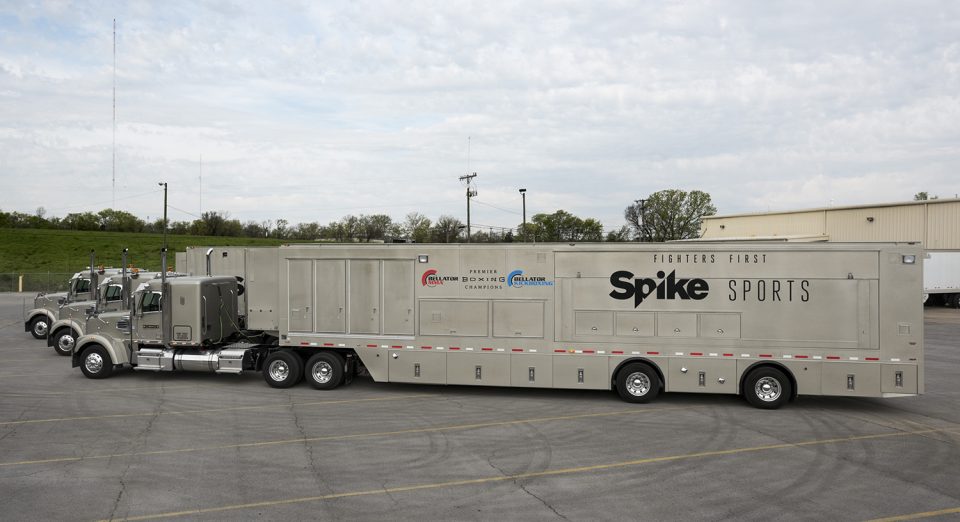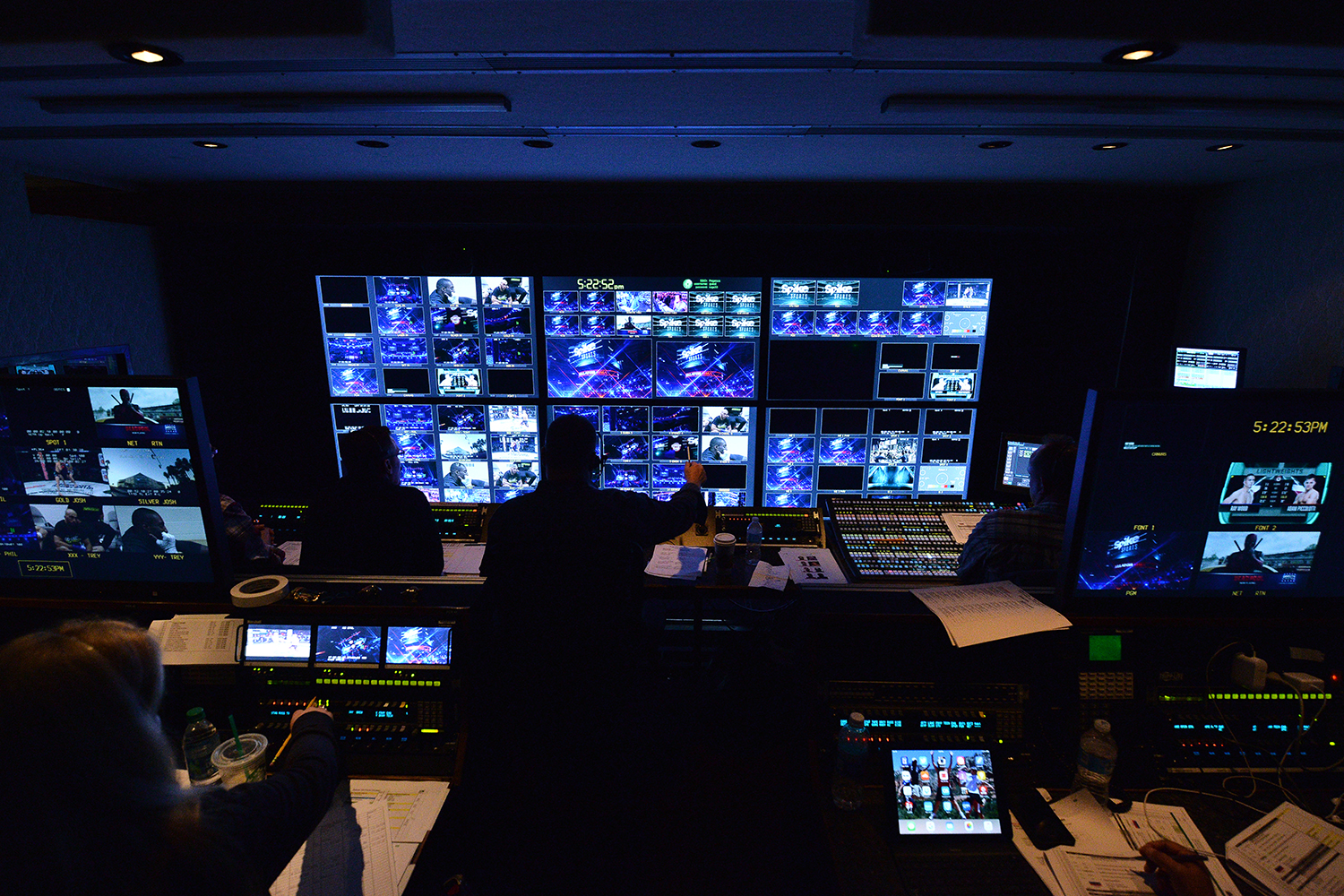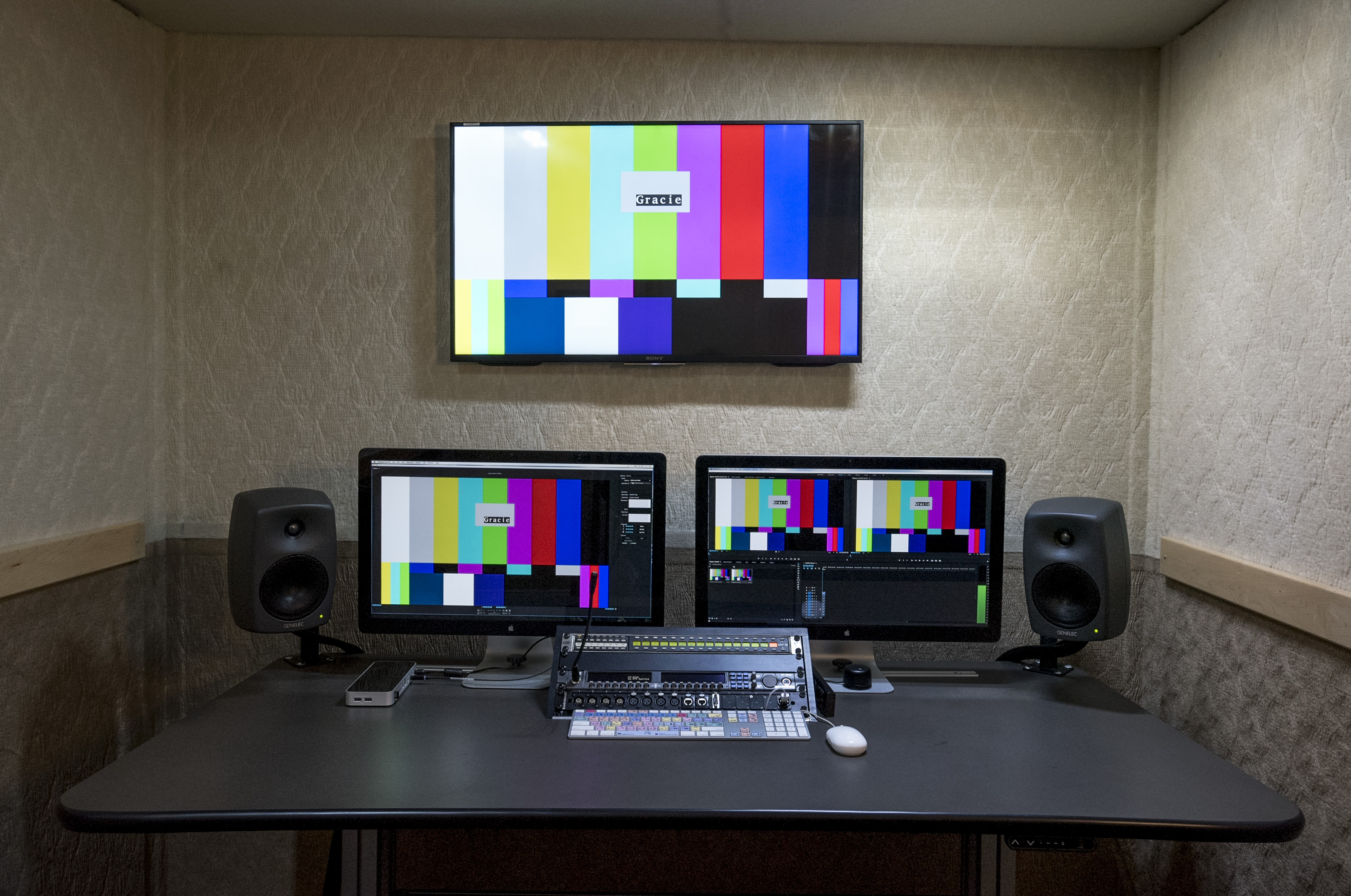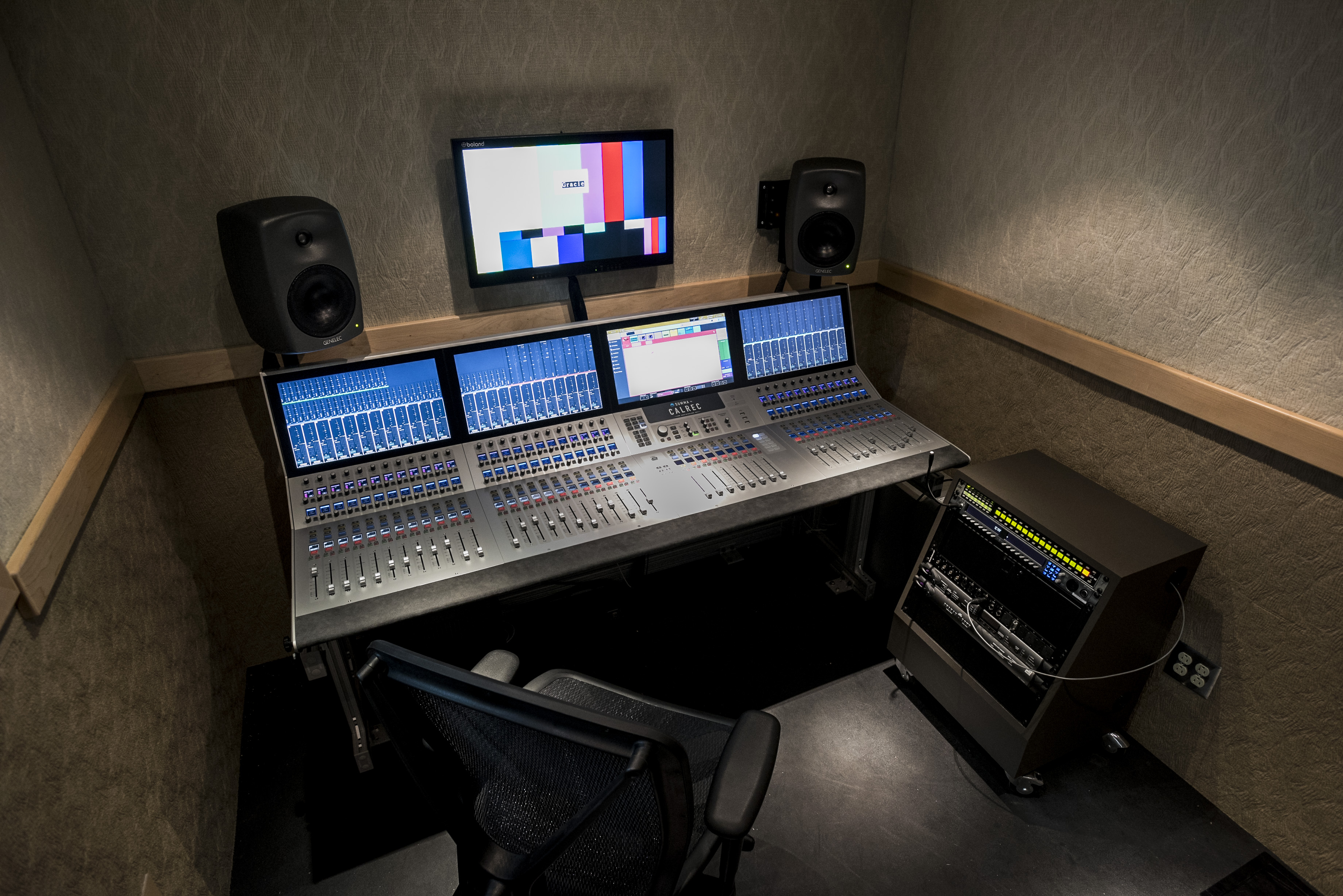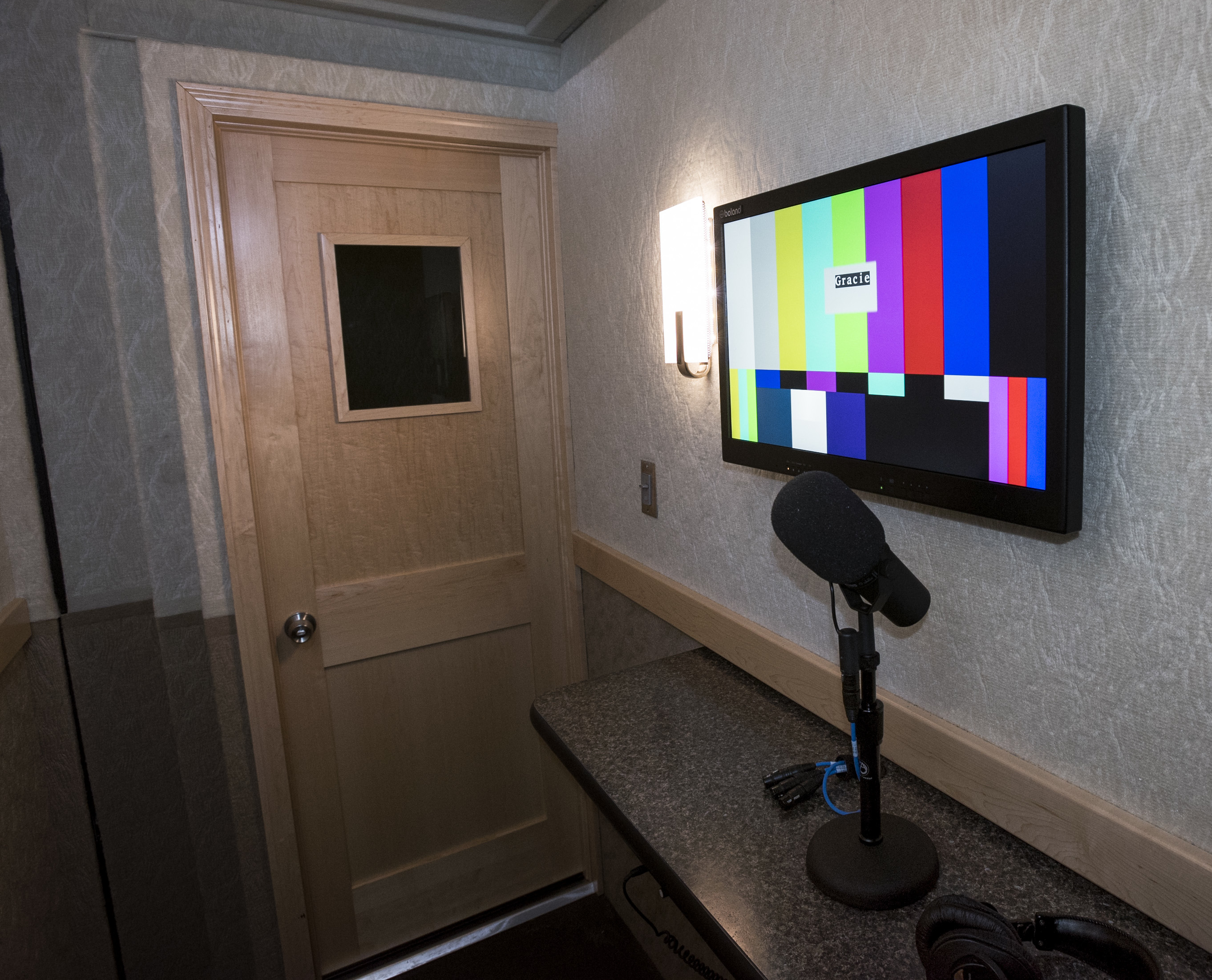Spike Sports’ New Trucks Pack Tech Punch With 4K-Cutout, Big Audio, Dedicated Edit Trailer
Story Highlights
It has been 3½ years since all Bellator MMA and kickboxing events began airing on Spike and just over a year since the network began carrying monthly Premier Boxing Champions (PBC) fights. As Viacom’s commitment to Spike Sports continues to grow — along with ratings for Bellator MMA (up 18% this year over 2015) and PBC on Spike (1.1 million viewers watched Broner vs Theophane on April 1) — so have Spike Sports’ remote production needs. To meet the mounting live-production requirements, Viacom rolled out a trio of its own mobile units this year specifically to produce Spike Sports’ growing calendar of events.
“By the fall of last year, we knew, with the volume of what Spike Sports is doing and the way that we’re growing that brand in terms of our live sports presentation, that Spike Sports should have its own trucks,” says Scott Fishman, SVP/executive producer, Spike TV. “It just made such cohesive sense from a volume standpoint and gave us the ability to move forward with new technology and be proprietary in that. When we looked at all of the different aspects, it made sense for us to do this rather than stay with a third-party vendor.”
Pegasus A and B debuted on March 1 and are slated to work a total of 22 events this year; edit truck Gracie launched April 1.
Pegasus Takes Flight
Viacom took its existing Pegasus 53-ft. double-expando and single-expando trailers (previously entertainment trucks), gutted them, and built new Spike Sports trucks essentially from scratch. Integrated by Beck Associates, Pegasus features two complete production rooms and audio rooms, one of each per trailer. The A unit houses a Grass Valley Kayenne 4M/E switcher (80 inputs/48 outputs) and a Calrec Apollo audio console; the B unit has a 2M/E switcher and a Calrec Summa console.
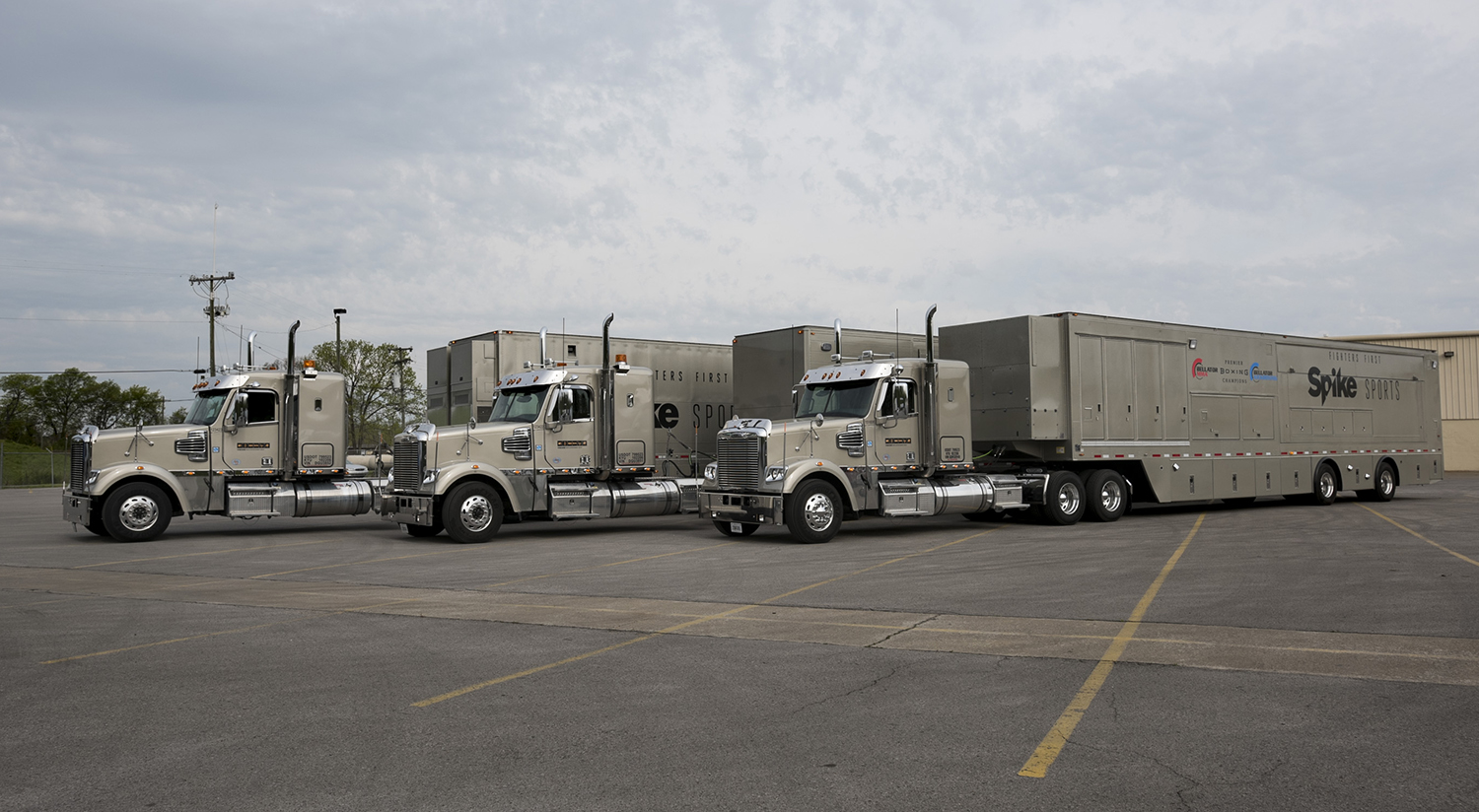
Pegasus A and B units house a pair of control rooms and audio rooms to serve both the primary show and potential international feeds.
Noting that Bellator is in 150 countries around the world, Fishman says that it has the capability to do, say, an Spanish-language broadcast: “We can actually do that now because we have a separate control room and audio room that’s tied together with the A unit. All we need to do is just bring in the personnel since we’ve got the switcher and Spanish-submix audio board.”
The trucks roll with 14 cameras, including three Sony HDC-4300L’s for high-frame-rate and 4K/HD-cutout applications and 10 Ikegami HDK-55’s. As for replay, Pegasus carries three EVS 12-channel XT3 replay servers and a four-channel EVS SpotBox (for a total of 40 replay channels). A pair of Sony PWS-4500 live server systems drive the 4K/HD-cutout workflow, which allows Spike Sports to pull a close-up HD image out of the 4K frame on replays.
“As we were planning, the thing that had become obvious to me — regardless of the distribution aspect to the consumer — is that 4K has already become a great production tool [for HD shows] right out of the gate,” says George Epley, VP, technical operations, Viacom Networks. “That is most obvious in sports, particularly [combat sports] because there are so many extreme close-ups. So, right off the bat, part of the design concept was to bring in as much 4K as we could as a production tool, not necessarily as the entire workflow. So we settled on Sony 4300 cameras and 4500 servers, and the production team is already starting to incorporate that cutout into their normal slo-mo and super-slo-mo [operations].”
The big question with any new truck these days is whether to go with an IP router or baseband router. Viacom opted for a baseband router — both in Pegasus and in its new Atlas entertainment-based mobile unit, which launched with Fox’s Grease Live in January.
“We just didn’t feel that IP was necessary in Atlas,” says Epley, “and we also didn’t feel that IP was necessary in Pegasus, so we went baseband.”
Other equipment includes Ross Video Xpression graphics, an RTS ADAM intercom system, and production monitor walls in both trucks composed of Boland 4K displays powered by Grass Valley Kaleido MX multiviewers. The three audio rooms (including Gracie’s) are connected via a Calrec Hydra II network.
“The ability to build our own units from the ground up,” says Fishman, “has given us the ability to do everything you would want to do if somebody handed you a blank canvas.”
Gracie Has Access to Spike Content Library
Gracie essentially serves as Spike Sports’ postproduction house on wheels and connects the edit team in the field directly with Spike headquarters in Manhattan in order to access the network’s entire content library.
The 51-ft. double expando, which was integrated in-house, features three Adobe Premier Pro edit stations (running on MacBook Pro 2’s with 43-in. Sony 4K client monitors) and a 256-TB Small Tree TitaniumZ-16 NAS running on a redundant 10GbE network (provided by Juniper Networks EX4550 10GbE switches). The truck also features its own audio-control room with a Calrec Summa console, a 64-channel Avid Pro Tools audio-editing system, and a voiceover room.
“The 256-TB hard drive we have in the edit truck is a similar hard drive to what we have in New York, so the postproduction team literally has the same library resources in New York as they do onsite,” says Epley. “As they’re editing and doing V/Os and things like that in the edit truck, they can also sweeten the audio and/or be able to share allocations between any of the facilities, whether it’s the main production unit, the international audio rom, or the edit truck.”
Spike ingests all 1080i content using Pronology’s mRes multiresolution encoder, which records three tiers of uncompressed video per SDI input channel prior to compression and wrapping, without missing a frame of action: a high-resolution media file, an edit proxy, and a live web-streamable proxy. 4K content from the HDC-4300’s is ingested natively into the PWS-4500’s and passed along to the edit team should they want to perform 4K cutout in post.
“All these trucks talk to our New York post facility,” says Fishman. “When we’re on the road, we’ve got access to our entire fight library in New York with the ability to share content back and forth. The ability for us to do all of that and have interconnectivity to allow our media library and post facilities [in Manhattan] to talk directly to our edit trailer on the road with us every week just made a ton of sense.”
